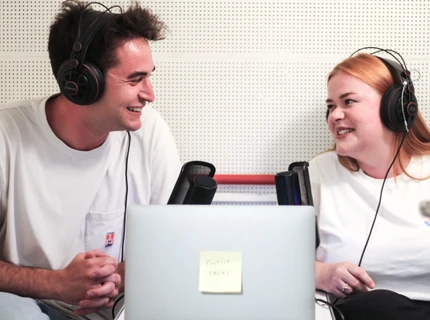
Chinese designer sheds light on Danish lamp tradition
“Light facilitates our understanding of the world. Eighty per cent of what we perceive can be attributed in one way or another to sight, and for me that underscores the significance of good lighting,” says Zeyu Rong, who is graduating from Design School Kolding.
He is deeply fascinated by the American lighting artist James Turell and the way that artist transforms light into a material in his works. So Zeyu Rong decided to explore this idea in his graduation project.
From experiment to product
The first step was to test and explore various aspects of light in a series of in-depth experiments. When Zeyu Rong reports on that phase he uses words like kinetics, spatiality, colour, texture and temperature.
For example he shone a light from different angles on folded pieces of paper in order to study how the perception of the material changes. Similarly he shone a light through different materials to see how that impacted the light – a particularly systematic approach that impressed designers from Louis Poulsen (the renowned Danish lighting design company) who is partnering on the project.
”The unique feature about this project is the very analytical approach in the initial phases. The many studies are an excellent method for working with light rather than jumping straight to design,” says Rasmus Markholt, Idea & Design Director at Louis Poulsen.
Classical with an edge
Zeyu Rong has always been aware that the abstract experiments with light were ultimately going to produce something concrete. Hence the end product is a pendant lamp to hang over a dining table. At first glance it appears fairly classical, but it has some unusual inlaid irregularities that emerge when the lamp is turned on. Depending on the angle the light falls differently, and the lamp also changes expression depending on which side it is viewed from. Thus some of the many optical experiences from the initial experiments are disseminated.
“The greatest challenge was to create a more commercial product based on my inspiration from the artistic universe,” says the industrial designer. “It is relatively simple to just open everything up and say now we are going to experiment, now anything goes. The real challenge is when all the ideas are going to be transformed into something concrete. But at the same time that was the most interesting aspect of the whole process.”
““The greatest challenge was to create a more commercial product based on my inspiration from the artistic universe.”Zeyu Rong, Industrial Designer”


